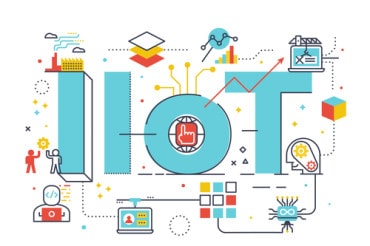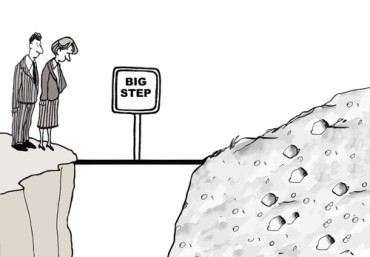
As we look into the future, we’ll see most, if not all, customer interactions enabled by intelligent edge, with the goal of improving the customer experience.
If 2022 was all about the emergence of industry clouds, 2023 will be about how industry clouds enable next-generation customer experiences. We think about this as the Experience Edge.
In addition to sharpening its Edge, the next wave of customer (CX) cloud innovations will also go deeper into the back and middle office and usher in the next phase of digital transformation. Our clients are shifting quickly from horizontal clouds to industry solutions that go beyond enabling functions to enable the end-to-end customer journey. In 2023, the focus on functions will be “out,” with increased preference for a more holistic industry “platforms” approach picking up steam.
Building for the customer
For the past couple of decades, we’ve seen the emergence of strong cloud solutions built to serve particular functions like marketing, sales, and service. And while functions are still foundational, now there’s a pronounced shift toward a broader industry platform that spans multifunctional teams.
Companies bringing this industry mindset to the table are looking for an end-to-end customer technology platform (CTP) — one that allows them to gain privileged insights to support the full customer lifecycle better than any of their competitors.
Historically, cloud solutions were built for internal functions in organizations. Today, the model is evolving to be more outside-in based on how customers want to engage with a brand. Doing so requires advanced customer experience capabilities powered by conversational AI and cloud.
See also: How Artificial Intelligence Can Improve Customer Experience
The intelligent edge
As we look into the future, we’ll see most, if not all, customer interactions enabled by intelligent edge, with the option to talk to a human as an exception, often with an incremental surcharge. For example, in the contact center space, the concept of AI-powered Intelligent Agents (IA) is just starting to take off; while the adoption of IA is relatively low today, it’s increasing rapidly, with one in 10 AIs projected to be automated by 2026. We see the potential for this trend to surpass these projected levels based on a rapidly increasing quality of service and a strong economic value proposition.
The proliferation will be driven in part by generational shifts as digital natives engage naturally with IAs across a range of industries, interaction types, and channels. As such, the trend from customer-to-employee interaction models toward customer-to-IA also aligns with customer preferences, which increasingly show a preference for self-service via digital channels.
For organizations, this can deliver a massive gain in productivity, effectiveness, and cost savings. By implementing low-cost IAs for the repetitive, formulaic work and backing them with an expert workforce who can address exceptions, performance levels will increase, as will customer satisfaction. The capabilities will also help companies overcome the ongoing labor shortage.
Regardless of the industry and the business model, the product or the service customers want, the ability to deliver personalized self-service engagement models informed by data will be enabled by next-generation industry clouds.
A new skill set
Moving to industry clouds in order to take advantage of these opportunities will depend on new skill sets. This list includes strong analytics and insights skills, creativity and design, a strong understanding of how to take advantage of AI models to enable new customer engagement models, and teams that are highly fluent with agile ways of working.
Not all of these abilities will come to life internally. Companies will also need outside technology and service partners. For example, during Dreamforce in 2022, we saw some exciting partner announcements, Salesforce and Genie, for example. For Salesforce customers, Genie, along with Mulesoft, Tableau, Einstein, and Slack, are powerful tool sets for creating real-time insights and driving customer engagement. In 2023, we’ll see this ecosystem continue to expand and become increasingly embedded at the core of the Salesforce Industry Cloud portfolio.
On top of the need for a solid experience strategy and design, strong governance and early investments in security and controls are also required. The right mix will allow companies to build the platforms they need to win the battle for customer loyalty.
The next big thing
With 2022 being one of the more complicated global economies we’ve seen in some time, we should expect increasing technology disruption in 2023 as well. Cloud will help mitigate external factors while creating a more resilient, customer-centric business. It’s always been a path to enterprise modernization; now, it’s also the place where cutting-edge customer experience innovation lives.
As companies continue on their journey to the cloud, they should focus on the outcomes that matter most to their businesses and, as needed, reset the direction. In particular, the standard for customer excellence is constantly evolving, so the ability to innovate and evolve is essential. Agility matters.
Winning companies will establish a strong cloud capability system designed to enable a connected customer experience that adapts to customer preferences and changing market conditions.




























